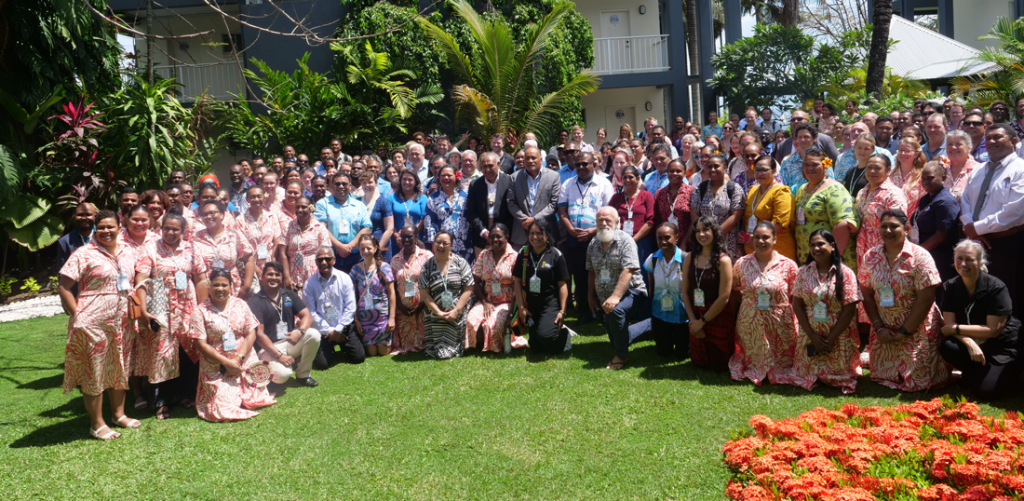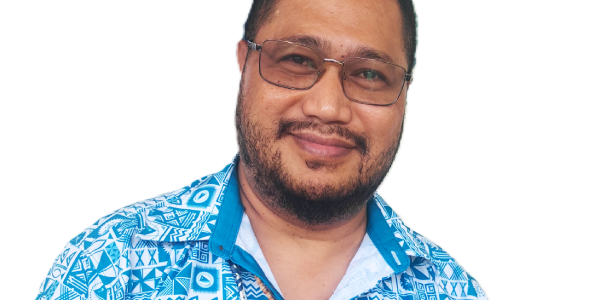The Pacific region, including Solomon Islands, is projected to face more frequent and intense category 4 and 5 tropical cyclones in the future, according to a new scientific study.
Moleni Tuuholoaki, an Ocean Science Officer at the Pacific Community (SPC), presented the findings during a side event at the 2nd Pacific Islands Ocean Conference in Honiara yesterday. The study, which examines cyclone trends from 1970 to 2024, focuses on how tropical cyclone patterns are influenced by El Niño and La Niña events.
“We found that the total number of tropical cyclones is decreasing — and that decrease is statistically significant,” Moleni told Solomon Star.
“However, category 4 and 5 cyclones are increasing significantly. So, while there will be fewer cyclones overall in the future, they will be far more intense and destructive.”
He said the findings are consistent with other global climate projections and underscore the growing risks for Pacific island nations.
“The sea level is rising, and when combined with stronger cyclones, the impacts — such as storm surges, coastal flooding, and destruction of infrastructure — will be much worse, especially for coastal communities,” Moleni added.
“Pacific governments need to speak up more strongly about climate change because it is the main driver behind both stronger cyclones and rising seas.”
Lenny Konamauri from the Solomon Islands Meteorological Service (SIMS) said if the forecasted trends occur, the country faces a high likelihood of severe disasters.
“Even a category 3 cyclone has caused disasters in parts of the Solomon Islands,” Konamauri said. “If we start experiencing category 4 or 5 storms more frequently, the damage could be catastrophic.”
Strengthening national disaster preparedness
In anticipation of these escalating risks, the Solomon Islands government has outlined a comprehensive approach in its National Disaster Risk Financing Strategy 2024–2027, which focuses on institutional strengthening, improved risk understanding, and financial preparedness.
Key aspects of the national cyclone policy include:
- Institutional Strengthening: Enhancing legislative and institutional frameworks for disaster risk management (DRM) to improve planning and capacity-building.
- Risk Understanding & Investment: Improving knowledge of disaster risks and their economic and social impacts to guide planning and infrastructure investment.
- Financial Preparedness: Establishing contingency funds, emergency reserves, contingent credit, and sovereign risk insurance, with support from partners such as the World Bank, ADB, and Pacific Catastrophe Risk Insurance Company (PCRIC).
- Disaster Risk Management Cycle: Ensuring coordinated disaster response, with the NDMO activated upon cyclone warnings from SIMS.
- Community-Based Approach: Promoting community resilience, self-help, and collaboration at all levels to reduce dependency and strengthen disaster response.
To further support disaster readiness, SIMS has been conducting Early Warning System (EWS) and Disaster Risk Management (DRM) awareness sessions in eight communities across Makira Ulawa Province under the Disaster Ready Program.
The training, delivered in partnership with World Vision and other key stakeholders, aims to improve local preparedness ahead of the Pacific cyclone season, which typically runs from November to April.
By EDDIE OSIFELO
Solomon Star, Honiara










